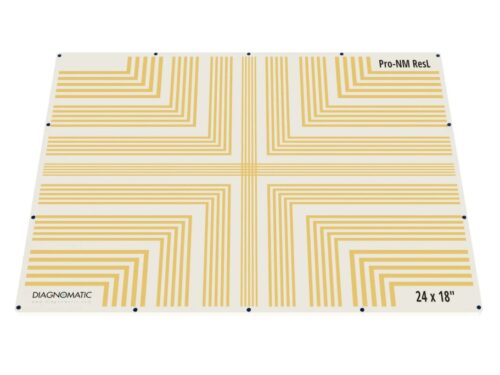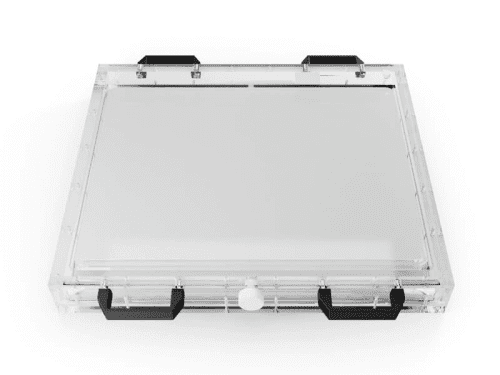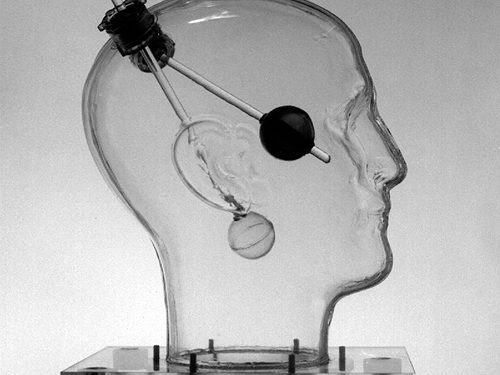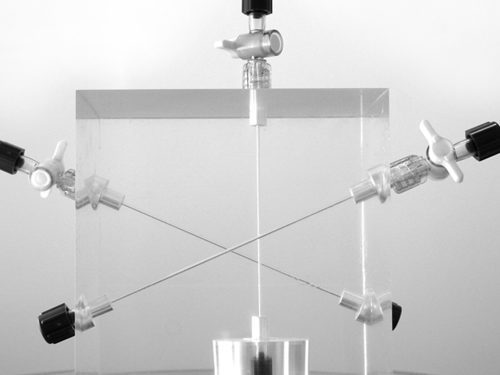-
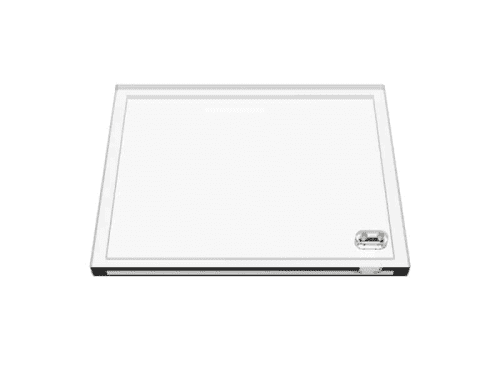 Flood phantoms provide a simple and efficient means of obtaining optimum camera performance with respect to uniformity of response over the entire crystal area. These phantoms are designed to be filled in horizontal position, thus preventing slight bulging caused by water pressure during vertical filling. Therefore, better uniformity in distribution of activity can be achieved.
Flood phantoms provide a simple and efficient means of obtaining optimum camera performance with respect to uniformity of response over the entire crystal area. These phantoms are designed to be filled in horizontal position, thus preventing slight bulging caused by water pressure during vertical filling. Therefore, better uniformity in distribution of activity can be achieved. -
 A simple phantom the quality assurance of geometric distortion and spatial resolution of gamma cameras. Array of holes, which when filled with activity, allows to measure point-to-point distances and Point Spread Function (PSF) - spatial resolution - at each point and its homogeneity across the entire Field of View.
A simple phantom the quality assurance of geometric distortion and spatial resolution of gamma cameras. Array of holes, which when filled with activity, allows to measure point-to-point distances and Point Spread Function (PSF) - spatial resolution - at each point and its homogeneity across the entire Field of View. -
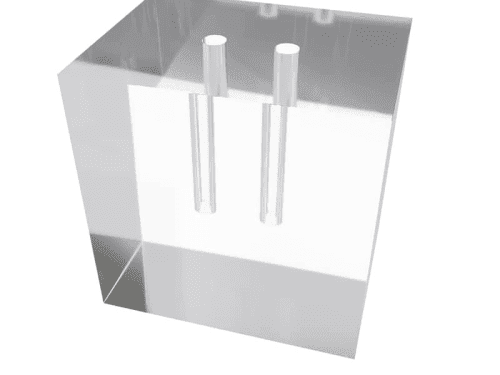 This scatter phantom simulates in-vivo forward and backscatter characteristics of 99mTc gamma rays for the extrinsic measurement of a scintillation camera’s deadtime. The phantom produces a spectrum typical of that observed from 99mTc in the myocardium. Reference: Ralph Adams, Gerald J. Hine, and C. Duane Zimmerman, “Deadtime Measurements in Scintillation Cameras Under Scatter Conditions Simulating Quantitative Nuclear Cardiography,” The Journal of Nuclear Medicine, 19 (1978), 538-544.
This scatter phantom simulates in-vivo forward and backscatter characteristics of 99mTc gamma rays for the extrinsic measurement of a scintillation camera’s deadtime. The phantom produces a spectrum typical of that observed from 99mTc in the myocardium. Reference: Ralph Adams, Gerald J. Hine, and C. Duane Zimmerman, “Deadtime Measurements in Scintillation Cameras Under Scatter Conditions Simulating Quantitative Nuclear Cardiography,” The Journal of Nuclear Medicine, 19 (1978), 538-544. -
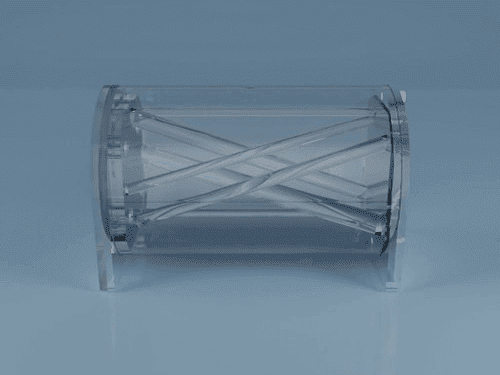 The Phantom designed for a simple and cost effective verification of image alignment and distortion in hybrid scanning systems like PET/CT or NM/CT. It consists of a cylinder that can be filled with a variety of fluids. Several non-parallel rods of varying diameter and at certain angles in relation to the phantom’s axes run the entire length of the cylinder.
The Phantom designed for a simple and cost effective verification of image alignment and distortion in hybrid scanning systems like PET/CT or NM/CT. It consists of a cylinder that can be filled with a variety of fluids. Several non-parallel rods of varying diameter and at certain angles in relation to the phantom’s axes run the entire length of the cylinder. -
 This phantom can be used to check the alignment of the internal and external lasers to the radiographic centre of CT and PET/CT units and to verify lateral gantry angle. It can also be used with accelerator units to check vertical and lateral gantry angles, laser alignment and vertical table movement.
This phantom can be used to check the alignment of the internal and external lasers to the radiographic centre of CT and PET/CT units and to verify lateral gantry angle. It can also be used with accelerator units to check vertical and lateral gantry angles, laser alignment and vertical table movement.

